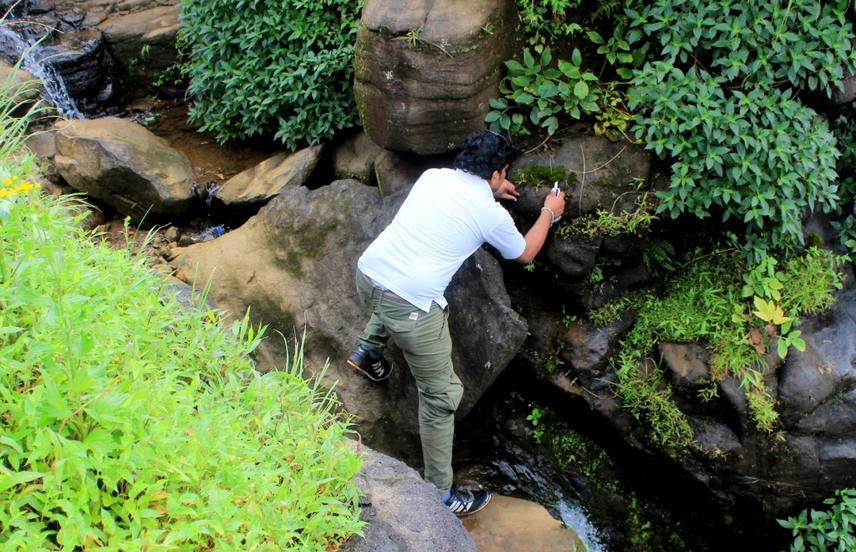Gund Shrikant Machindra
North Western Ghats region is covered by fragmented evergreen and semi evergreen forest, rich in diversity and Unexplored. This projects aims to improve knowledge of Bryophytes diversity and its status of North Western Ghats.

Me busy at collecting moss.
The Western Ghats are one of the globally recognized hot-spots of biodiversity with an average altitude 1200M. North western Ghats is different from Southern part by geography and climate. It lie approximately between 15°60 and 20°75´ N and are composed of Deccan flood basalts and range extend across three states (Gujarat, Maharashtra and Goa) and it is a region that includes several unique ecosystems and harbors a large number of threatened and endemic species. Presence of numerous barren lateritic plateaus is a unique feature of the NW Ghats. They are covered by characteristic ephemeral vegetation with many plants that have very restricted distribution. At a smaller scale the Ghats have a variety of smaller distinctive landscape elements, microhabitats and niches. The area covers only 6% of the Indian landmass but 30% of the Indian plants and animal species can be found there. Only 200 spp. of bryophytes have been reported clearly indicating that our current knowledge of the bryological diversity is far from satisfactory.
The study will improve our knowledge of the bryodiversity of the NW Ghats. The novel data based on the fieldwork, combined with the historical records, will also provide a basis to estimate how endangered some of the bryophytes are in this region. Photographs and related information will give a new tool to develop a digital herbarium which assists researchers and other people interested of the biodiversity of the region. Studies on distribution patterns, ecology and phytogeography will provide information about the need of conservation of specific region, habitats or particular species of bryophytes. Distributional maps will be developed for each region. We will gather information of traditional uses of bryophytes by visiting local community using questionnaires aimed for local people. This study will provide baseline information for local community, school children as well as college students. Workshops in the field will encourage people to work for conservation.